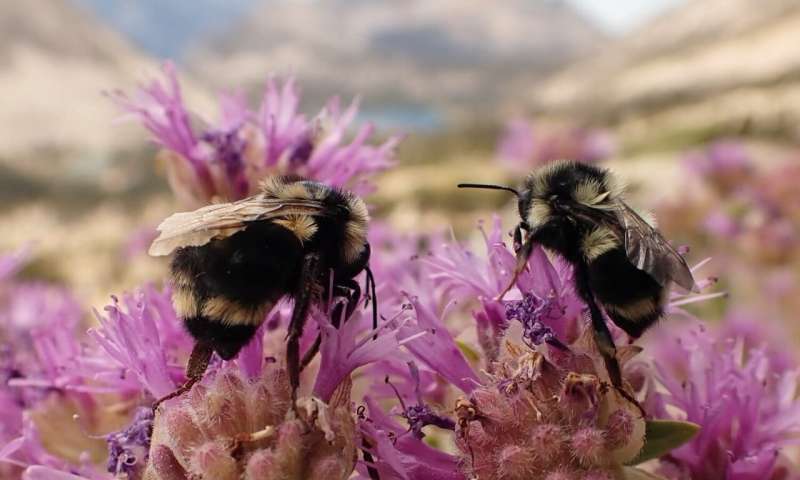When it comes to bumblebees, does size matter?

While honeybee workers are all the same size, that's not true for bumblebees. Scientists aren't sure what's behind the wide variety in bumble body sizes, but a new UC Riverside project aims to find out.
Certain crops, like greenhouse tomatoes, eggplant, peppers, and blueberries, rely on bumblebees for a style of pollination that only bumblebees can perform. Among growers, the preference can be for bigger-bodied bumblebees because they're thought to be more efficient pollinators.
Enabled by a $750,000 grant from the National Institute of Food and Agriculture, the research team will investigate factors suspected of influencing bumblebee biology and body size, including climate change, wildfires, and the presence of nearby honeybee colonies.
In many cases, individual animals are born smaller when their habitat has less nutrition available. The researchers want to know if this is also true for bees. "One idea is that honeybees are taking more food resources, resulting in smaller bumbles. This is part of what we will be testing," said UCR entomologist and project lead Hollis Woodard.
To test this, the researchers will collect bumblebee size data over the next four years from places both with and without honeybees nearby. "It's hard to find anywhere in the lower 48 without either managed or feral honeybees. For this reason, we're headed to Alaska for part of the study," Woodard said.
Fire may also play a role in bumblebee development. Some research has shown that bumblebees are born bigger, and in higher numbers, during the years following a wildfire. Since wildfires are common in California, the research team will also be collecting data from places throughout the state with different types of fire histories.

"Fires are good in some ways for bees," Woodard said. "As the land recovers from the burn, a lot of flowers appear, offering food."
In addition to the mystery of what influences the bees' body size, it's also unclear what role size plays in a bumble colony. While all bumblebee workers perform the same functions, variation in size could allow the hive as a whole to collect pollen from a wider variety of flowers.
Though bigger bees can collect more pollen, they might not be right for every plant species. For some flowers, especially those that are trumpet-shaped, smaller bumblebees are better pollinators.
"There are theories that bumblebee sizes are just random, or that it's just generally good to have variation," Woodard said. 'Right now, we don't yet know exactly what this variation in size does for colonies."
In addition to benefitting crop growers, the team's findings could ultimately benefit the bees themselves. "Any insights we gain into factors affecting the bumblebees could help us better understand how to bolster their dwindling populations," Woodard said. "Helping them in turn helps ensure the health of wildflowers, as well as our food supply."
Provided by University of California—Riverside